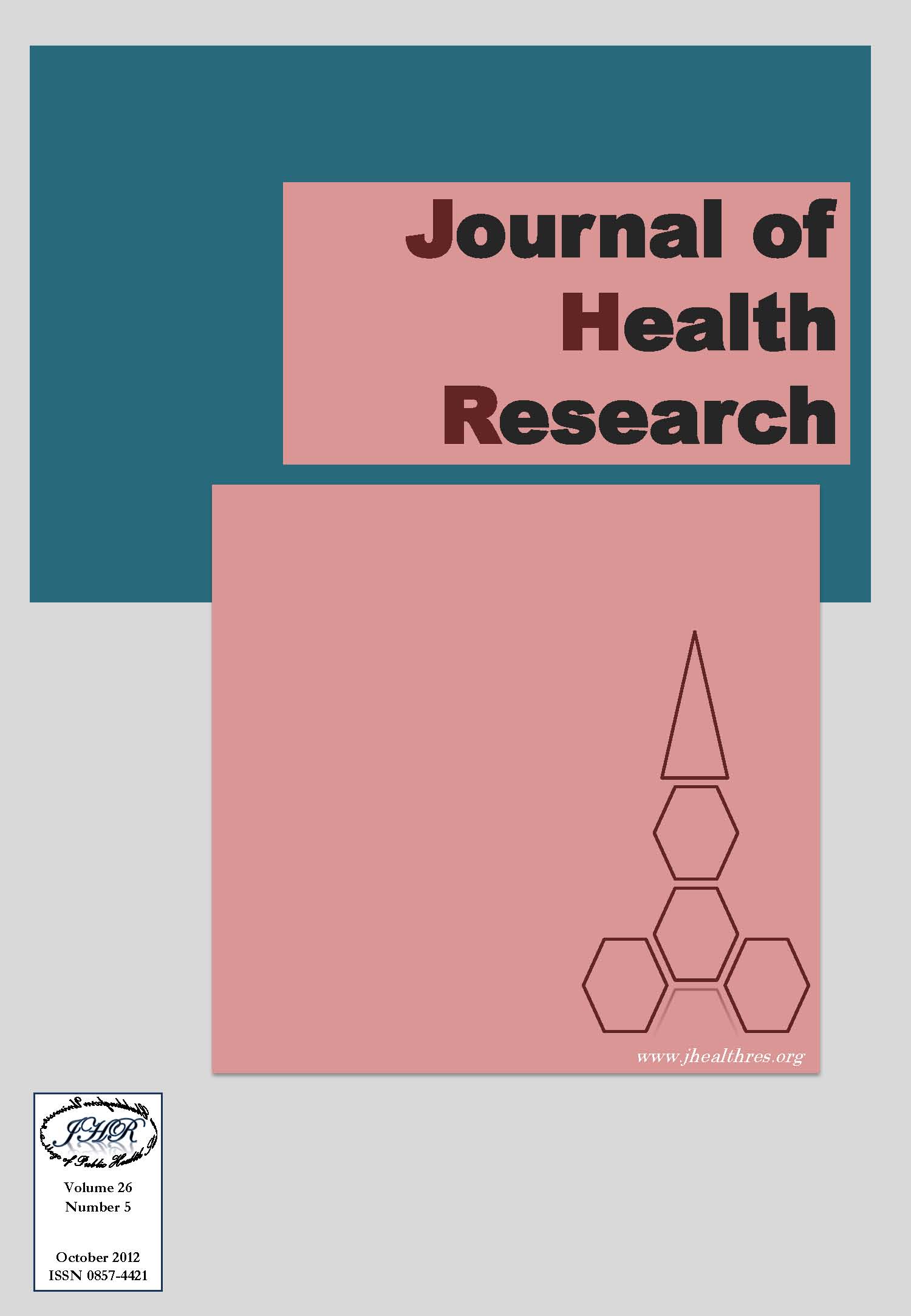Prevalence of and Risk Factors for Work-Related Musculoskeletal Disorders in Informal Occupational Groups in Cha-Om Sub-District, Khangkoi District, Saraburi Province, Thailand
Keywords:
musculoskeletal disorders, informal occupational groups, bamboo-thread production, ThailandAbstract
The research was a cross-sectional study with the objectives of finding the prevalence of and the risk factors for work-related musculoskeletal disorders (WMSDs) in informal occupational groups with majority (over 90%) of bamboo-thread production group at Cha-om Sub-district, Khangkoi District, Saraburi Province, Thailand. The work process of the bamboo-thread production group includes raw material acquisition, preparation, production, drying-up of the finished products, packaging, and product uploading onto the truck, most of which tend to cause the micro-trauma, especially the work postures while producing. Through the funding by the Thai Health and Bann Nee Mee Suk Project (Happy Home Project) initiated by Chulalongkorn University, data collection was conducted by a purposive sampling of 52 volunteered-villagers who mostly produced bamboo-thread in 2011 with informed consent. The standardized NORDIC Musculoskeletal Questionnaire (NMQ) was employed for face-to-face interview. SPSS version 17 was used to analyze the measurement on socio-demographic data, exposures (current health status and work postures), including pain regions. Descriptive statistics and Chi-square test/Fisher’s Exact test with p-value of <0.05 considered statistically significant were employed. The results revealed that 90.4% (n = 47) indicated their WMSDs annual prevalence (12-month before the interview) for the top three body areas: low back (72.3%, n = 34); shoulders (53.2%, n =25), and knees (48.9%, n =23). The past 7 days of WMSDs complaints were made by 45 respondents (86.5%) with the same order of low back (55.5%, n =25); shoulders (42.2%, n =19), and knees (33.3%, n = 15), respectively. Main factor related to WMSDs past 7-day prevalence was the respondents’ educational background (p-value=0.041). However, no relation was found for annual WMSDs prevalence. As ergonomics intervention can reduce the risk of musculoskeletal injuries, based on the current WMSDs prevalence data, tailor-made exercise regimen intervention program was recommended.







